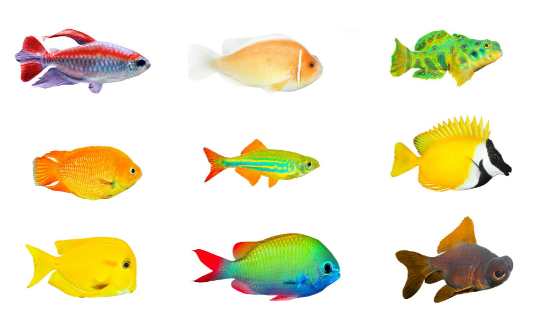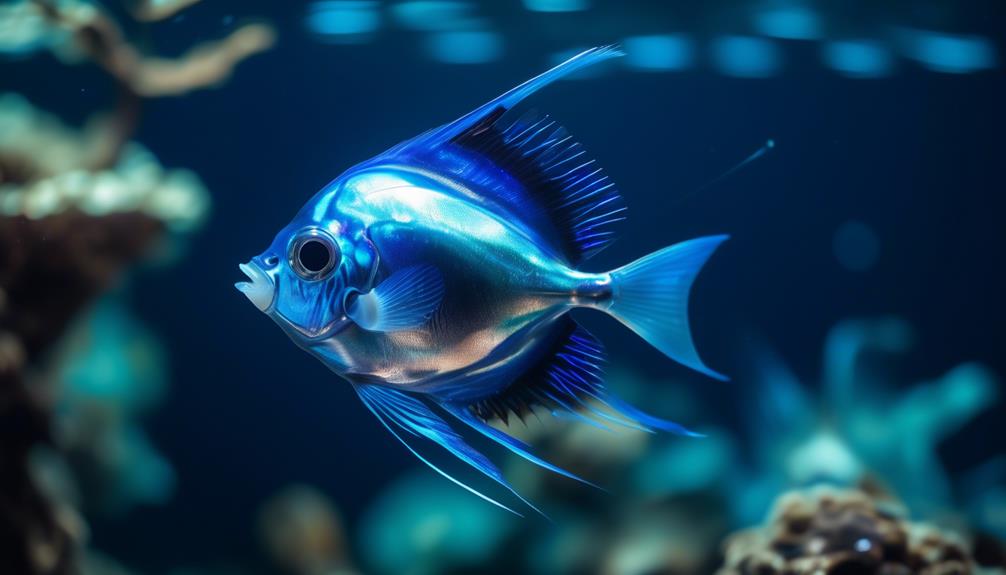
Are you tired of the same old fish species in your aquarium, longing for something more visually striking and captivating? Look no further than the majestic hatchetfish.
While some may argue that all fish look the same, the hatchetfish defies this notion with its unique shape, vibrant colors, and graceful swimming patterns.
But there’s more to these aquatic marvels than meets the eye. Stay tuned as we uncover the secrets of their mesmerizing beauty and delve into the world of hatchetfish care and maintenance.
Brace yourself for an exploration of the stunning allure of these aquatic wonders.
Key Takeaways
- Hatchetfish belong to the family Gasteropelecidae and there are three genera and nine different species.
- The most common species is the Common Hatchetfish (Gasteropelecus sternicla).
- Hatchetfish are peaceful schooling fish that can be kept in community tanks, but males of the same species may have trouble getting along.
- Hatchetfish are native to South America and Panama, and they prefer to swim in the upper level of the water column just below the surface.
Hatchetfish: An Introduction to Aquatic Marvels
Hatchetfish, with their unique hatchet-like shape and captivating colors, are truly aquatic marvels. These fascinating fish belong to the family Gasteropelecidae and come in three genera and nine different species. The most common species is the Common Hatchetfish (Gasteropelecus sternicla).
Hatchetfish are peaceful schooling fish that can be kept in community tanks, although males of the same species sometimes have trouble getting along. Originating from South America and Panama, these fish prefer to inhabit the upper level of the water column, swimming just below the surface.
With their large pectoral fins and striking colorations, ranging from black, gray, silver, and brown to brighter hues like red, orange, and green, hatchetfish are a sight to behold. They require warm, slightly acidic water and appreciate some floating plants and ample swimming space at the surface. In order to prevent them from jumping out, it’s important to keep the tank covered.
With proper care and maintenance, hatchetfish can be a captivating addition to your aquarium.
The Mesmerizing Shape of Hatchetfish
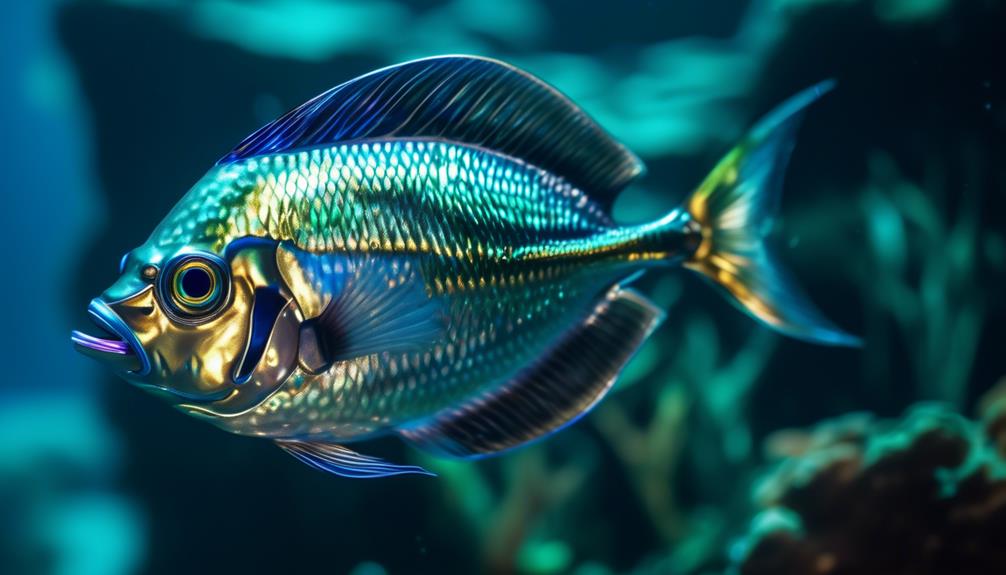
With their sleek and distinctive form, it’s hard not to be captivated by the mesmerizing shape of hatchetfish. These incredible aquatic marvels possess a shape that’s both unique and striking, making them a standout species in any aquarium.
Here are four reasons why the shape of hatchetfish is truly mesmerizing:
- Hatchet-like body: As the name suggests, hatchetfish have a body shape that resembles a hatchet or axe. This elongated and laterally compressed body allows them to glide effortlessly through the water, making them a graceful sight to behold.
- Large pectoral fins: Hatchetfish have disproportionately large pectoral fins, which give them the appearance of having wings. These fins enable them to make impressive leaps out of the water, adding to their mesmerizing allure.
- Array of colors: Different species of hatchetfish boast a wide range of colors, from subtle shades of black, gray, and silver to vibrant hues of red, orange, and green. Their colorful presence adds a mesmerizing visual element to any aquarium.
- Striped or marbled pattern: Several species of hatchetfish display intricate striped or marbled patterns on their bodies. These patterns create a stunning visual effect, further enhancing their overall mesmerizing shape.
A Spectrum of Colors: Exploring Hatchetfish Varieties
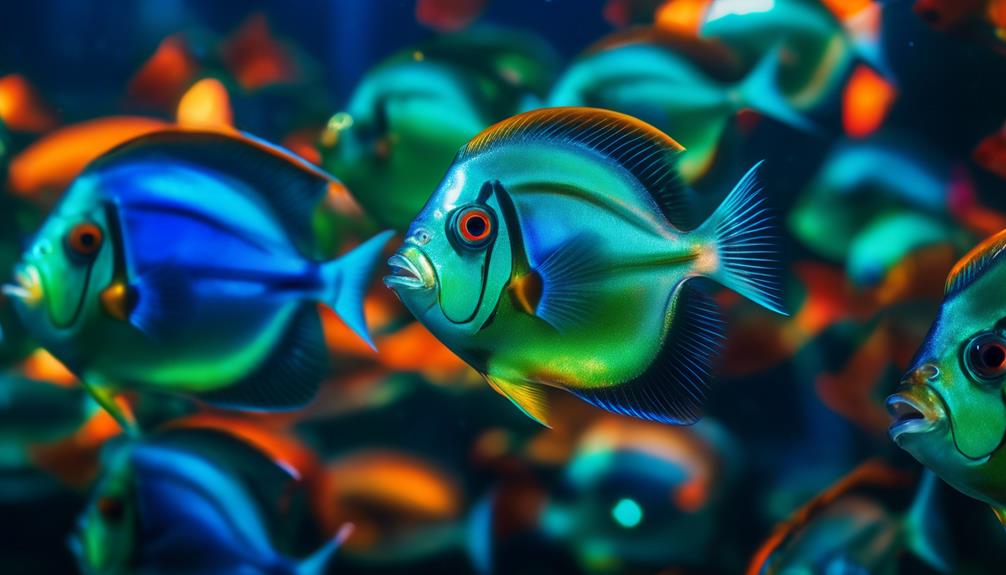
There is a remarkable variety of colors waiting to be explored when it comes to hatchetfish. These aquatic marvels exhibit a range of vibrant hues that can add a pop of color to any aquarium. Take a look at the table below to discover the stunning varieties of hatchetfish:
| Species | Coloration | Pattern |
|---|---|---|
| Common Hatchetfish | Silver | N/A |
| Marbled Hatchetfish | Silver, black | Marbled |
| Red Hatchetfish | Red | N/A |
| Green Hatchetfish | Green | N/A |
As you can see, hatchetfish come in shades of silver, black, red, and green, with some species even displaying unique marbled patterns. These colors can create a visually striking display in your aquarium, making your hatchetfish the center of attention. Whether you prefer a more subtle or vibrant coloration, there is a hatchetfish variety to suit your taste. So, why not add a splash of color to your underwater world with these stunning aquatic marvels?
The Delicate Care of Majestic Hatchetfish
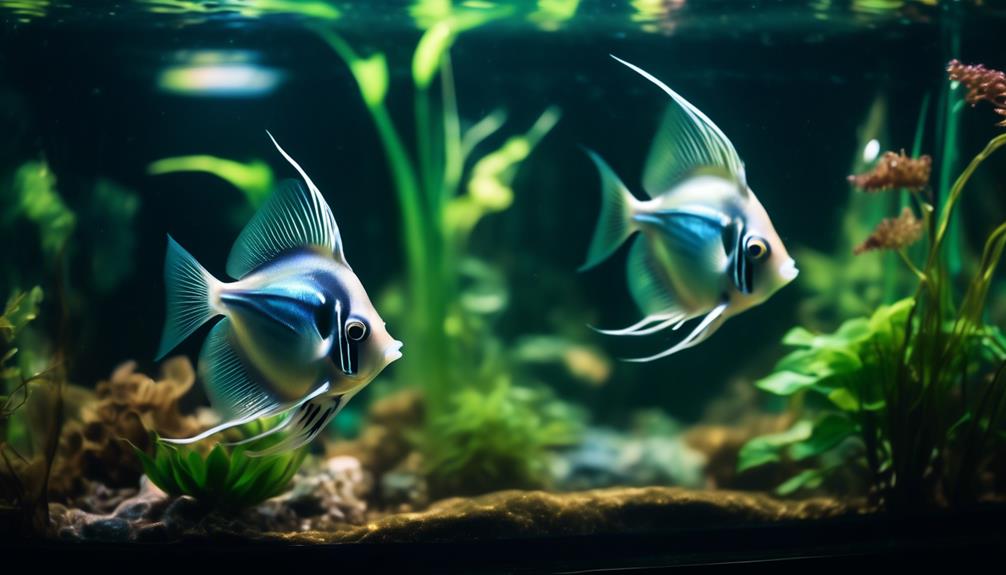
To properly care for majestic hatchetfish, it’s important to understand their specific needs and requirements. Here are four key points to consider:
- Water conditions: Hatchetfish prefer warm, soft, slightly acidic water with a pH between 5.5 and 7.5 and water hardness between 2 and 15 dGH. They also require clean water with some floating plants and ample swimming space at the surface.
- Tank setup: Due to their tendency to jump, it’s crucial to have a covered tank to prevent them from escaping. Additionally, providing hiding spots and a well-maintained filter system will help create a comfortable environment for them.
- Tank mates: Hatchetfish are peaceful schooling fish that can be kept with other hatchetfish, Corydoras, Tetras, Catfish, Dwarf Cichlids, and Gouramis. However, it’s important to note that males of the same species might’ve trouble getting along.
- Disease susceptibility: Hatchetfish are moderately hardy but highly susceptible to Ich. Regular water testing, maintaining proper water conditions, and quarantining new fish before introducing them to the tank can help prevent diseases and ensure their well-being.
Creating the Perfect Habitat for Hatchetfish
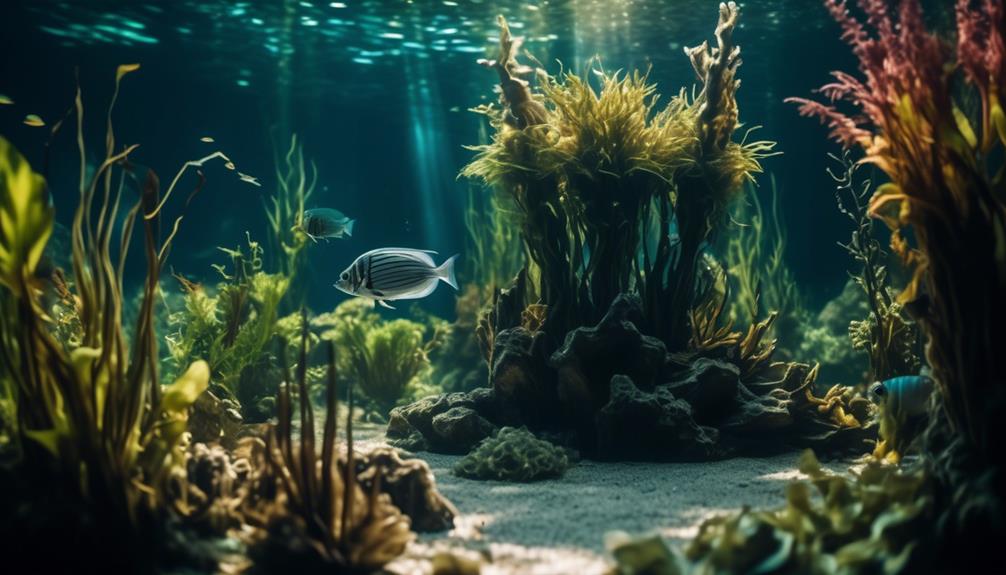
When setting up a habitat for hatchetfish, there are a few important factors to keep in mind.
First and foremost, hatchetfish prefer warm water with a temperature between 75 and 82 degrees Fahrenheit.
It’s also crucial to provide them with soft, slightly acidic water, with a pH level ranging from 5.5 to 7.5 and water hardness between 2 and 15 dGH.
Additionally, hatchetfish thrive in clean water, so regular water changes and filtration are necessary.
To mimic their natural environment, it’s recommended to include some floating plants in the tank, as well as provide ample swimming space at the surface.
Lastly, a covered tank is essential to prevent hatchetfish from jumping out.
Harmonious Tank Mates for Majestic Hatchetfish
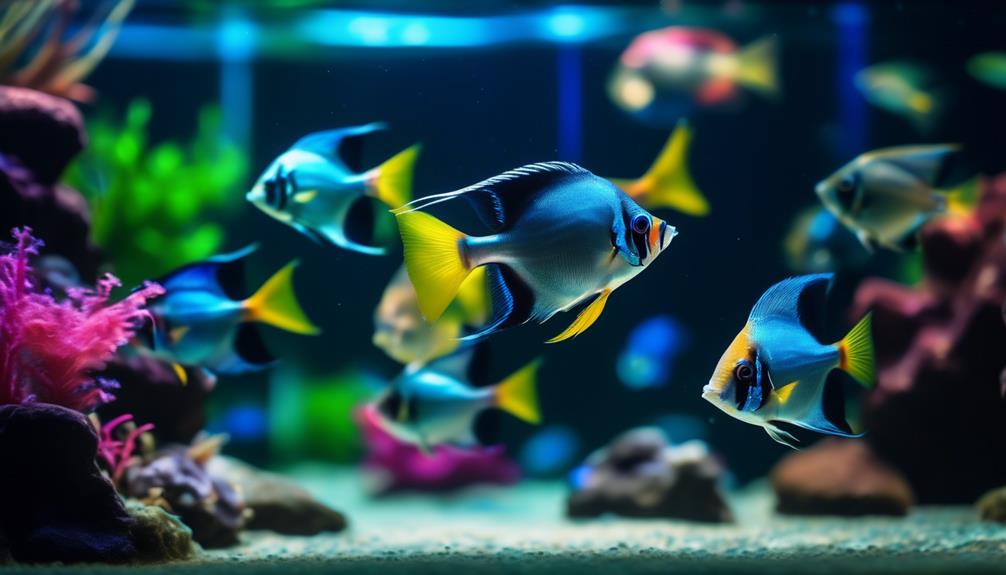
When considering tank mates for your majestic hatchetfish, it’s important to choose species that will create a harmonious and peaceful community. Here are four suitable tank mates that will coexist well with your hatchetfish:
- Corydoras: These small, bottom-dwelling catfish are peaceful and won’t disturb your hatchetfish. Plus, they help keep the tank clean by scavenging for leftover food.
- Tetras: Neon tetras, cardinal tetras, and other small tetra species make great companions for hatchetfish. They’re active swimmers and add a splash of color to your tank.
- Catfish: Species like the bristlenose pleco and corydoras catfish are excellent tank mates for hatchetfish. They occupy different areas of the tank and have a peaceful nature.
- Dwarf Cichlids: German blue rams and apistogrammas are compatible with hatchetfish due to their calm demeanor. They add diversity to your tank with their vibrant colors.
Frequently Asked Questions
How Long Do Hatchetfish Typically Live?
Hatchetfish typically live for about 2 to 4 years. However, with proper care and a suitable environment, they may live longer. Regular maintenance, balanced diet, and good water quality are essential for their longevity.
What Is the Average Size of a Hatchetfish?
The average size of a hatchetfish ranges from 1.5 to 2.5 inches. They have a unique, hatchet-like shape and large pectoral fins that make them stand out in any aquarium.
Can Hatchetfish Be Kept With Aggressive Fish Species?
No, hatchetfish should not be kept with aggressive fish species. They are peaceful schooling fish and are best suited for community tanks with compatible tank mates like other hatchetfish, Corydoras, Tetras, Catfish, Dwarf Cichlids, and Gouramis.
Do Hatchetfish Require a Specific Diet?
Yes, hatchetfish require a specific diet. They are omnivorous and should be fed a variety of foods including live or frozen insects, small crustaceans, and high-quality flakes or pellets designed for small fish.
Are Hatchetfish Prone to Any Specific Diseases?
Yes, hatchetfish are prone to a specific disease called Ich. They are moderately hardy but highly susceptible to Ich. It is important to maintain clean water and provide suitable tank conditions to prevent this disease.
Why are Moorish Idols Considered Elusive Beauties of the Sea Compared to Majestic Hatchetfish?
Moorish idols are often considered elusive beauties of the sea, their striking colors and graceful movements captivating underwater admirers. In comparison, the majestic hatchetfish has a more stark appearance, making the moorish idols stand out even more with their undeniable allure.
Conclusion
So, if you’re mesmerized by the captivating beauty of aquatic creatures, the majestic hatchetfish is sure to captivate you. With their unique shape, vibrant colors, and peaceful nature, these fish make a stunning addition to any community tank.
By providing the necessary care and creating the perfect habitat, you can ensure the well-being of these aquatic marvels. So, dive in and experience the enchantment of the majestic hatchetfish for yourself.




